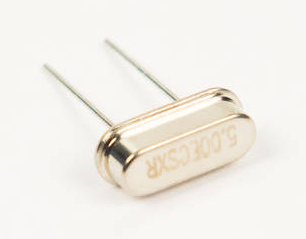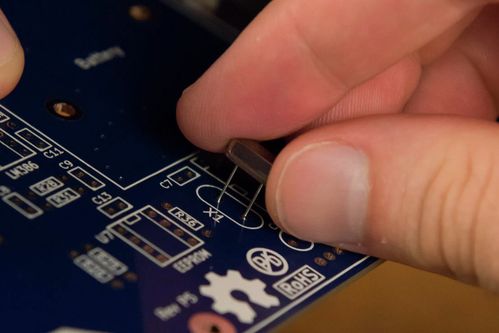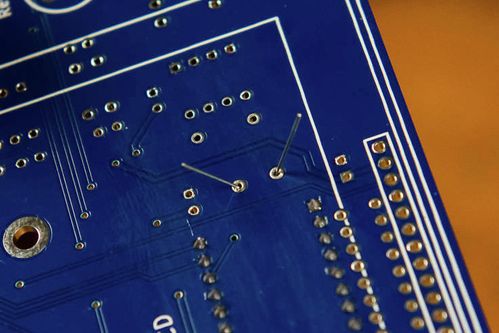Step 2: Crystal Oscillator
For a microcontroller to operate, it needs some kind of clock, or way of keeping time. This can be provided by something called an oscillator. An oscillator is an electronic circuit that produces a periodic signal, often a sine or square wave.
The chip has an internal oscillator, but it is comparatively slow - achieving speeds only up to 12MHz on average (8-20MHz) - and less accurate than a crystal oscillator. With an external oscillator, it can go all the way to 80MHz. This is important because of how a computer works. You see, a computer operates only as fast as the clock it is attached to. The faster the clock, the more code the computer can process in a second. We want the computer to run as fast as possible so that we can do more stuff with it!
Drawing Sprites With A Fast Clock
With A Faster Clock
This is why we will install a crystal oscillator into X1. This is a tiny, metal, helmet-shaped component that looks something like a jelly bean jabbed with wires.
Tools Needed
- Soldering iron
- Cutter
Parts Needed
- 1 x Crystal oscillator
Instructions
- Seat the crystal in the X1 footprint on the board. The direction that you install this component does not matter.
- Bend the lead wires outward to hold the crystal to the board.
- Solder into place and trim the lead wires.
Unless otherwise noted, content on this site is licensed under the
Creative Commons Attribution-ShareAlike 4.0 International License.





